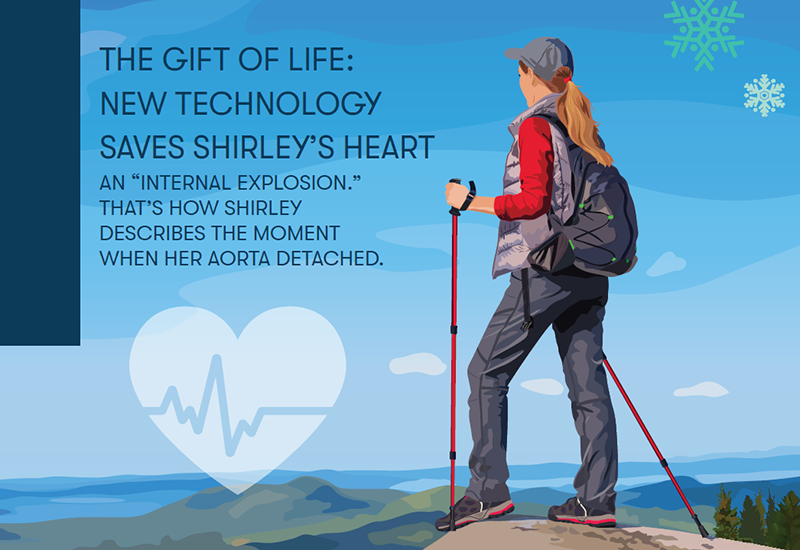
Shirley was born with a double aortic arch and a narrowing or constriction, known as coarctation. In her case, that meant her heart was sending more blood to her brain, rather than to her extremities. It was a condition that many children did not survive.
Because of her condition growing up, Shirley had her share of hospital visits and appointments. By the age of 15, Shirley suffered a brain hemorrhage. An artificial ascending and descending aorta graft performed in Calgary saved her life. At the age of 33 the artificial aorta buckled and as a result she had to travel to Houston for a procedure to replace it with a new one.
Growing up with congenital (from birth) heart complications made Shirley take excellent care of her health. Then, six years ago, Shirley faced a critical, life-threatening incident that was completely unexpected.
When she started to feel pain, she brushed it off as indigestion. But, when she got up to stretch she immediately went unconscious collapsing to the ground. Her husband immediately rushed her to their local hospital in Pincher Creek. A CT scan revealed the severity of her condition and she was immediately transported by air ambulance to the Peter Lougheed Centre in Calgary.
With no time to waste, Shirley was rushed from the helicopter and onto the unit. Massive internal bleeding meant the team could not perform open heart surgery. Therefore, the only option was to go through the iliac artery in the groin. Using technology, the team was able to reattach the old artificial aorta by splicing it together with the largest stent available. Because the rest of the artificial aorta was worn, breaking down and damaged, they relined it by overlapping stents along the interior length of the aorta.
Later, Shirley realized the gift she was given.
Thanks to donations from donors like you, the team at Peter Lougheed Centre were able to utilize technology that only became available approximately two years prior. Had this incident occurred earlier, it is likely there would have been no way medically possible to save her.
This time around, Shirley is dealing with not only the physical healing, but the emotional side that many people don’t talk about. The impact of experiencing such a traumatic and life-threatening incident is tremendous and unexplainable. Yet, Shirley also realizes how fortunate she has been throughout her life, to be cared for by so many amazing professionals, and also benefitting from research and technology that allowed her to survive.
“I’m so enormously grateful. It’s hard to articulate, but I’m just so in awe of how great mankind can be and how grateful I am for these incredible teams.”


